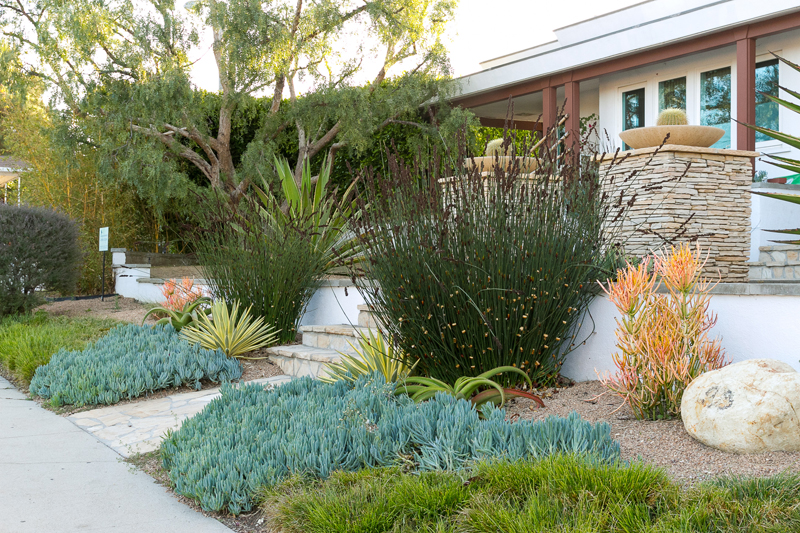Is the summer heat leaving you feeling a bit parched? Perhaps your landscaping is thirsty, too? If so, you’re not alone. People all over the southwestern United States are realizing that our traditional green lawn landscapes are more difficult and expensive to keep watered in hot, dry years like this one. So much so that cities are actually paying residents to rip-up their grass and replace it with climate-appropriate plants.
No matter where you stand on the aesthetics of the issue, the fact is that losing the lawn allows cities to reduce water consumption—amazingly, by up to a third—even while the population grows. Clearly, the water savings that come from planting more wisely are huge.
But, in spite of that, people still love their lawns—which is why cities will pay you some green (cash) to lose the green (grass). While a lush lawn does have its appeal, so do sages and native plants that attract butterflies and native birds.
It is not just in water savings that natives and more climate-appropriate plants win-out over grass in the eco debate. Often, grass is touted as a “green” choice because it is cooling and absorbs stormwater runoff.
But other choices do a far better job in this arena as well. If you want to reduce the heat island effect (the build-up of heat off the paved surfaces of the city) and cool your home, trees do a much better job than grass. As far as reducing stormwater runoff, turf can absorb some stormwater, but not nearly as effectively as native plants with mulch.
Here’s why.
Turf has a root system that only extends a few inches into the soil; native plants have roots that extend several feet. Where there are roots, there are pockets of oxygen and microorganisms, and that’s what makes the earth more sponge-like and absorbent. The soil under turf is often extremely compacted. In fact, so much so, that the runoff co-efficient (or the ability of the land to take in water, or not) for turf is about the same as concrete. Yes, you read that correctly, green grassy areas are sometimes no more absorbent than hard gray concrete.
Combine that with dry-weather runoff, which is the water that comes from sprinklers (used to irrigate grass) and you’ve got a lot of wasted water going into the storm drains, taking with it a good deal of pollutants. In fact, the number one source of water pollution is urban runoff.
If you want to conserve water, replacing turf with more climate-appropriate plants is a great way to go. If you want to keep your local beaches and waterways nice and clean, replacing turf with more climate-appropriate plants is… (you get the point).
Want to go green? Ditch the green lawn and enjoy these warm days in your new native garden instead.

